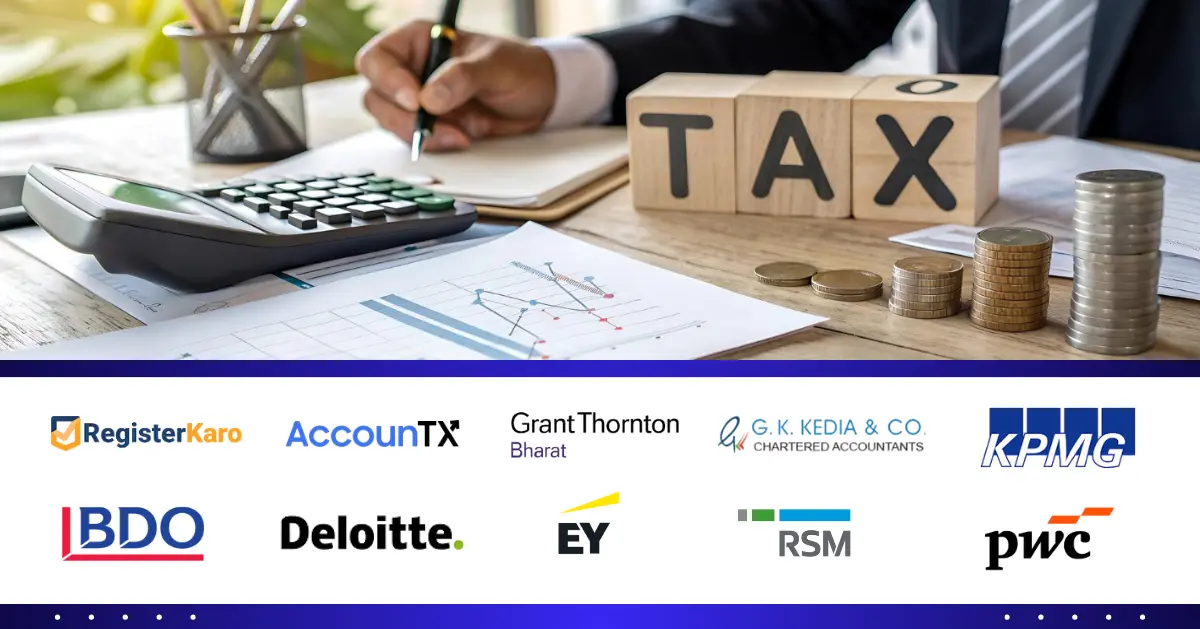
Ever wondered how businesses in India save millions in taxes annually?
The secret lies in understanding the depreciation rate as per income tax act – a powerful tax planning tool that can significantly impact your bottom line.
With Indian businesses collectively claiming depreciation worth over ₹2 lakh crores each year, mastering these rates isn’t just beneficial, it’s essential.
The depreciation rate as per income tax act serves as your roadmap to legitimate tax savings while ensuring complete compliance.
What is Depreciation Rate as Per Income Tax Act?
The value of annual depreciation allowed by the income tax act is determined by sets of percentages called the depreciation rate. These rates are unique to several types of business assets. Just as with other provisions, the Income Tax Act sorts assets into different blocks using a depreciation approach.
Above all, the allowable tax rates are only those listed in the Income Tax Act. Therefore, all companies have to use these rates, no matter how they keep their accounting. This means it is important to know how depreciation is calculated under the income tax act to ensure you comply with taxes.
What are Block of Assets?
Under the Income Tax Act, assets are grouped into different “blocks” based on their nature and depreciation rates. This block system simplifies depreciation calculations and ensures uniformity across businesses.
Here are some of the key features of how block system works:
- Similar assets with the same depreciation rate are grouped together
- Each block is treated as a single unit for depreciation calculation
- When you buy new assets, they’re added to the relevant block
- When you sell assets, the sale proceeds are deducted from the block
- Depreciation is calculated on the net block value
Below are some examples of asset blocks, commonly used for categorizing fixed assets:
- Building Block: Office buildings, factories, warehouses.
- Furniture Block: Office furniture, fixtures, fittings.
- Plant & Machinery Block: Manufacturing equipment, tools, machinery.
- Computer Block: IT equipment, software, digital assets.
- Vehicle Block: Cars, trucks, commercial vehicles.
Conditions for Claiming Depreciation
To claim depreciation under the Income Tax Act, certain conditions must be fulfilled:
1. Ownership of the Asset
- The asset must be owned (wholly or partly) by the entity or individual claiming depreciation.
- In case of joint ownership, depreciation is claimed proportionally.
2. Asset Must Be Used for Business or Professional Purposes
- Depreciation is allowed only if the asset is used in the course of business or for professional activities.
- Assets used for personal purposes are not eligible for depreciation claims.
3. Asset Must Be Put to Use
- The asset must be put to use during the relevant financial year.
- If the asset is not used during the year, no depreciation can be claimed.
In some tax systems (e.g., India), if the asset is used for less than 180 days in the year, only 50% of eligible depreciation is allowed.
Methods of Calculating Depreciation
The Income Tax Act, 1961 prescribes specific methods for calculating depreciation on tangible and intangible assets. These methods serve different purposes and offer unique advantages for accounting accuracy and tax planning.
The two primary methods are the Straight Line Method (SLM) and the Written Down Value (WDV) Method.
1. Straight Line Method
Under this method, depreciation is calculated as a fixed percentage of the original cost throughout the asset’s useful life. The depreciation amount remains constant each year.
Key Features of SLM:
- Equal depreciation amount is deducted every year.
- Simple and easy method, making it easy to plan and account for expenses..
- Primarily used for accounting and financial reporting purposes as per Schedule II of the Companies Act, 2013.
- Not recognized for Income Tax purposes in India, except in special cases such as undertakings engaged in power generation and distribution, where the SLM is permissible under Section 32(1)(i) of the Act.
2. Written Down Value (WDV) Method
The Written Down Value method is the primary depreciation method under the Income Tax Act. Under this method, depreciation is calculated on the reducing balance each year.
In this method, depreciation is calculated on the net book value of the asset after deducting depreciation claimed in earlier years.
Key Features of WDV:
- Depreciation decreases each year.
- Higher depreciation in initial years.
- Tax benefits are front-loaded.
- Reflects actual asset value depreciation pattern.
- Mandatory for Income Tax calculations.
Common depreciation rates (as per Income Tax Rules, Appendix I):
- 15% for general machinery and vehicles
- 40% for computers and software
- 10% for buildings (non-residential use)
- 5% for residential buildings
What is Furniture Depreciation Rate?
The furniture depreciation rate stands at 10% per annum under the Income Tax Act. The income tax depreciation rate for furniture and fittings is 10%. This furniture depreciation rate income tax applies to various categories.
What Is Protected by a Furniture Block?
In essence, a furniture block safeguards both your physical workspace assets and the essential infrastructure that keeps your environment functional and professional.
- There are office desks, chairs, tables and cabinets.
- Filing cabinets and storage units are standard office and home belongings.
- You should also plan for both the reception and waiting area furnishings.
- Equipment and furniture designed for use in conference rooms.
- Cables for your appliances, air ventilators, sockets, switches, light fixtures and the like.
Depreciation Rates for FY 2025-26 for Most Commonly Used Assets
Here’s an overview of the current depreciation rates applicable for the financial year 2025-26, covering the most frequently used business assets across various industries.
| Asset Category | Depreciation Rate | Method |
| Buildings (General) | 10% | WDV |
| Buildings (Temporary) | 100% | WDV |
| Furniture & Fittings | 10% | WDV |
| Plant & Machinery | 15% | WDV |
| Motor Vehicles | 15% | WDV |
| Computers & Software | 40% | WDV |
| Aeroplanes | 40% | WDV |
| Ships | 20% | WDV |
| Books & Scientific Equipment | 40% | WDV |
| Renewable Energy Devices | 40% | WDV |
Formula for Calculating Depreciation
Understanding the correct formulas behind depreciation calculations is essential for accurate tax planning and compliance with Income Tax Act provisions.
1. Straight-Line Method Formula
Annual Depreciation = (Cost of Asset – Salvage Value) ÷ Useful Life
For example, the depreciation will be computed as follows:
Suppose you purchase machinery for ₹1,00,000 with a useful life of 10 years and salvage value of ₹10,000:
Annual Depreciation = (₹1,00,000 – ₹10,000) ÷ 10 = ₹9,000 per year
2. Written Down Value (WDV) Assets Formula
Annual Depreciation = Opening WDV × Depreciation Rate ÷ 100
For example, the depreciation will be computed as follows:
Example 1: Machinery Depreciation @15% Rate
Machinery purchased for ₹1,00,000, using the WDV method at a 15% depreciation rate:
Year 1: ₹1,00,000 × 15% = ₹15,000 → Closing WDV = ₹85,000
Year 2: ₹85,000 × 15% = ₹12,750 → Closing WDV = ₹72,250
Year 3: ₹72,250 × 15% = ₹10,838 → Closing WDV = ₹61,412
Example 2: Furniture Depreciation @10% Rate
Furniture block valued at ₹1,00,000, using the WDV method at a 10% rate:
Year 1: ₹1,00,000 × 10% = ₹10,000 → Closing WDV = ₹90,000
Year 2: ₹90,000 × 10% = ₹9,000 → Closing WDV = ₹81,000
Year 3: ₹81,000 × 10% = ₹8,100 → Closing WDV = ₹72,900
Analysis of AS-22/IND AS 12 Concerning Depreciation
The treatment of depreciation under accounting standards and tax laws often differs, leading to temporary (timing) differences that affect income tax reporting.
Understanding AS-22 (Accounting Standard) and Ind AS 12 (Indian Accounting Standard) is crucial for accurately accounting for such differences and recognizing deferred tax impacts.
1. AS-22 (Accounting for Taxes on Income)
Issued by: ICAI (Institute of Chartered Accountants of India)
Applicable to: Entities not covered under Ind AS (mainly non-listed and smaller companies)
- Governs the accounting treatment of current tax and deferred tax.
- Focuses on timing differences, which arise when income or expenses are recognized in different periods under accounting and tax laws.
- Specifically addresses the impact of depreciation-related differences between financial books and tax filings.
Impact of Depreciation:
Book depreciation (as per Companies Act) may differ from tax depreciation (as per the Income Tax Act).
These differences create timing differences, leading to:
- Deferred Tax Liability (DTL): When tax depreciation exceeds book depreciation.
- Deferred Tax Asset (DTA): When book depreciation exceeds tax depreciation (e.g., due to disallowed depreciation or accelerated depreciation reversals).
AS-22 requires:
- Recognition of DTA/DTL in financial statements.
- Disclosure of the nature and amount of such differences.
- Reconciliation between accounting and tax depreciation.
2. IND AS 12 (Income Taxes)
Issued by: Companies (Indian Accounting Standards) Rules, 2015
Applicable to: Companies following Ind AS (typically listed and large unlisted companies)
Enhanced Requirements:
- More than AS-22.
- Detailed guidance on temporary differences.
- Specific provisions for depreciation differences.
- Enhanced disclosure requirements.
Depreciation-Related Provisions:
Ind AS 12 explicitly addresses differences arising from:
- Varying depreciation methods or rates (SLM in books vs. WDV for tax).
- Revaluation of assets (common under Ind AS, but not recognized for tax).
- Assets with zero tax base due to full depreciation under tax laws.
Requires recognition of:
- DTL for taxable temporary differences.
- DTA for deductible temporary differences, subject to probability of future taxable income.
Emphasizes comprehensive disclosures about:
- DTA/DTL movements
- Nature of differences
- Expected reversal periods
| Aspect | Accounting Standards (AS-22 / Ind AS 12) | Income Tax Act |
| Basis | Based on useful life as per Companies Act (Schedule II) | Prescribed rates/methods under Income Tax Rules |
| Method | Straight Line / WDV as per policy | WDV method (generally mandatory) |
| Purpose | Fair presentation of financial position | Tax liability computation |
| Implication | Creates deferred tax (DTA/DTL) | Impacts current tax liability |
Mastering these depreciation provisions isn’t merely an accounting exercise; it’s a strategic imperative that can significantly impact your business’s financial health and tax efficiency.
The proper application of depreciation rates can optimize your cash flows, reduce tax liabilities, and enhance your company’s overall financial performance. As regulations continue to evolve and business environments become increasingly competitive, staying updated with the latest depreciation guidelines becomes crucial for sustainable growth.
Professional expertise in tax planning and compliance ensures that your business not only meets statutory requirements but also maximizes legitimate tax benefits available under the law.
Ready to maximize your tax benefits through strategic depreciation planning? Contact RegisterKaro’s expert today for personalized tax compliance solutions that optimize your business savings.
Frequently Asked Questions (FAQs)
1. What is the current furniture depreciation rate under the Income Tax Act?
The furniture depreciation rate is 10% per annum as per Income Tax Act provisions. This rate applies to all business furniture including desks, chairs, cabinets, and electrical fittings. The rate remains consistent across different business sectors and applies to the Written Down Value method. Businesses can claim this depreciation annually to reduce their taxable income effectively.
2. How is plant and machinery depreciation rate determined?
Plant and machinery depreciation rates vary from 15% to 40% depending on the specific asset category and technology. General machinery typically attracts 15% depreciation rate while specialized high-tech equipment may qualify for higher rates. The Income Tax Act classifies different types of machinery into specific blocks with predetermined rates. Recent amendments have standardized many high rates to 40% maximum for most technology assets.
3. Can businesses use book depreciation rates for income tax purposes?
No, businesses must use only the depreciation rates prescribed under the Income Tax Act for tax calculations. Book depreciation rates used in financial statements are not relevant for income tax purposes. The tax department accepts only the statutory rates specified in the Income Tax Rules and notifications. Any deviation from prescribed rates may result in disallowed depreciation and additional tax liability.
4. What is the Written Down Value method for depreciation calculation?
The Written Down Value (WDV) method calculates depreciation on the reduced balance of assets each year. Under this method, depreciation applies to the asset’s remaining value after deducting previous years’ depreciation. This results in higher depreciation amounts in initial years and gradually decreasing amounts over time. The formula is: Annual Depreciation = WDV × Depreciation Rate ÷ 100.
5. Are there different depreciation rates for residential and commercial buildings?
Yes, residential buildings have a 5% depreciation rate while non-residential buildings used for business purposes have 10%. This distinction helps differentiate between personal and business use of property assets effectively. The rates apply only to buildings used for income-generating activities or business operations. Proper classification is essential to claim the correct depreciation rate for tax purposes.
6. What recent changes have been made to depreciation rates?
Recent amendments have reduced several high depreciation rates of 60%, 80%, and 100% to a maximum of 40%. These changes primarily affect computer equipment, software, and advanced technology assets across various industries. The government regularly reviews and updates depreciation rates to reflect technological changes and economic policies. Businesses must stay updated with the latest notifications to ensure proper compliance.
7. How do depreciation rates affect tax planning for businesses?
Higher depreciation rates provide greater immediate tax benefits by reducing taxable income more significantly in initial years. Businesses can use these tax savings for reinvestment, expansion, or working capital requirements strategically. Proper depreciation planning helps optimize cash flows and reduces overall tax burden over the asset’s life. Understanding applicable rates enables better asset purchase timing and financial planning decisions.
8. What documentation is required for claiming depreciation benefits?
Businesses must maintain detailed asset registers showing purchase dates, costs, depreciation rates, and accumulated depreciation amounts. Proper invoices, purchase documents, and asset classification records are essential for supporting depreciation claims during assessments. Block-wise asset categorization and rate application must be clearly documented and justified with relevant provisions. Professional record-keeping helps avoid complications during tax audits and assessments.
9. Can depreciation rates vary between different business sectors?
No, depreciation rates under the Income Tax Act are uniform across all business sectors for similar assets. The rates depend on asset categories and specifications rather than the business sector or industry type. However, certain specialized equipment may have different rates based on their technical characteristics and usage. All businesses must follow the same statutory rates regardless of their industry or size.
10. What happens if wrong depreciation rates are applied in tax returns?
Applying incorrect depreciation rates may result in disallowed depreciation, additional tax liability, and potential penalties during assessments. The tax department can rectify such errors and demand additional taxes with interest for wrong claims. Businesses should file revised returns to correct such mistakes voluntarily before assessment proceedings begin. Professional tax consultation helps avoid such errors and ensures proper compliance with depreciation provisions.




